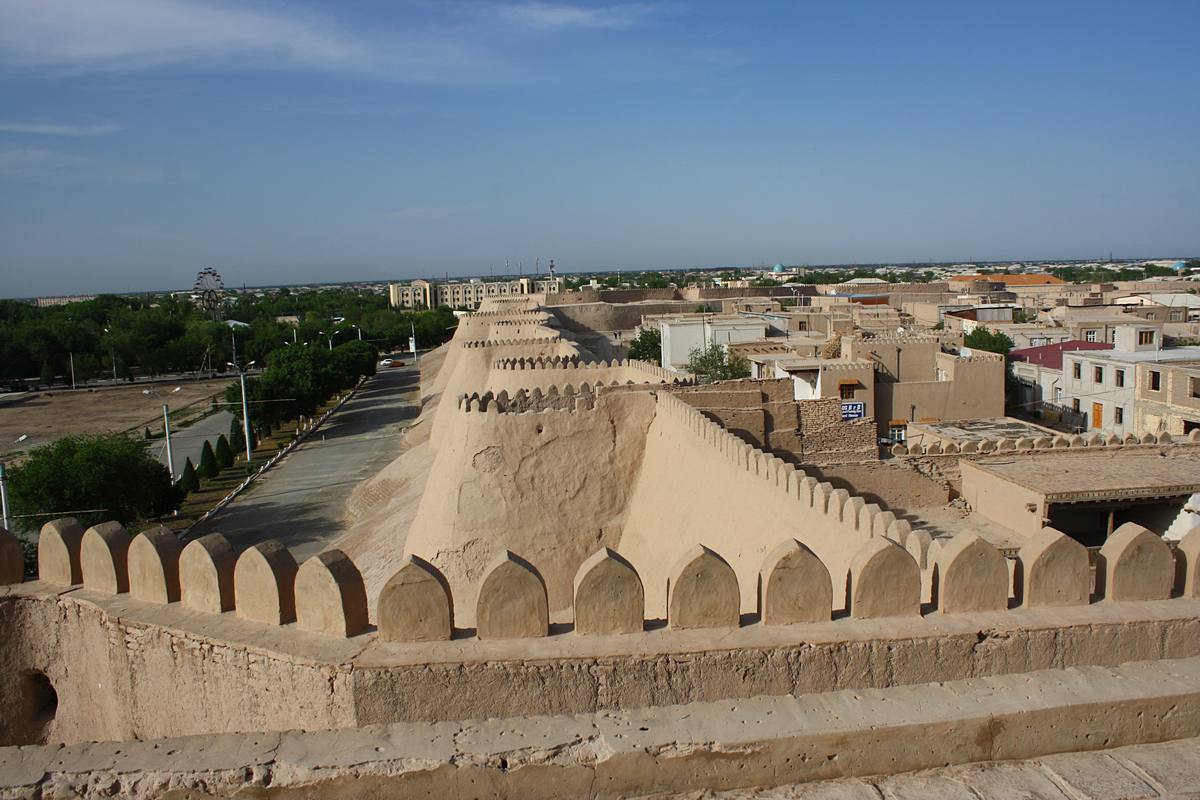Khiva - Walls of Ichan Kala
The city walls of Ichan-Kala are a rare example of a medieval fortress that has survived to the present day. The city of Khiva was surrounded by two sets of walls – Ichan-Kala (inner city) and Dishan-Kala (outer city).

The walls of Ichan-Kala were built between the V and IV centuries BC. They are higher than the walls of Dishan-Kala, probably because of the natural relief (legend has it that the city was built on a sandy hill).
The city walls were built of mud bricks (40 x 40 x 10 cm) and rebuilt several times over the centuries. The Ichan-Kala walls of Khiva are 8 – 10 metres high, 6 – 8 metres wide and 2250 metres long.
Every 30 metres there are circular defence towers that extend beyond the walls of Ichan-Kala. On the walls and towers are jagged railings with narrow embrasures to repel enemy attacks during the siege.
In the system of defences there were ditches filled with water; even today this can be seen in relief in the southern part and to the north and west the asphalt covered the old ditches.
The city gates were also part of the protection system. They have special adaptations that were used by the guards who guarded the city.
The passage is covered by a vaulted roof (Koy-Darvoza) or, if the corridor is very long, by several domes.
On the sides of the corridor are vaulted rooms where the guards and tax collectors lived, there was also a courtroom and sometimes a prison. In eastern cities, gates and entrances to public buildings and private houses have a special significance: the more imposing they look, the greater the honour and recognition enjoyed by the city, the buildings and their creator.
In the course of time, the defensive function of the gate became less important and the gate became part of the urban design. The gate was decorated with beautiful, colourful tiles and ayats from the Koran.
Sometimes texts were written on the gates, such as eulogies to the Khan or excerpts from poems. Some gates have been converted into shops over time. The walls of Ichan-Kala have 4 gates: Ata-Darvoza, Polvon-Darvoza, Tash-Darvoza and Bagcha-Darvoza.
